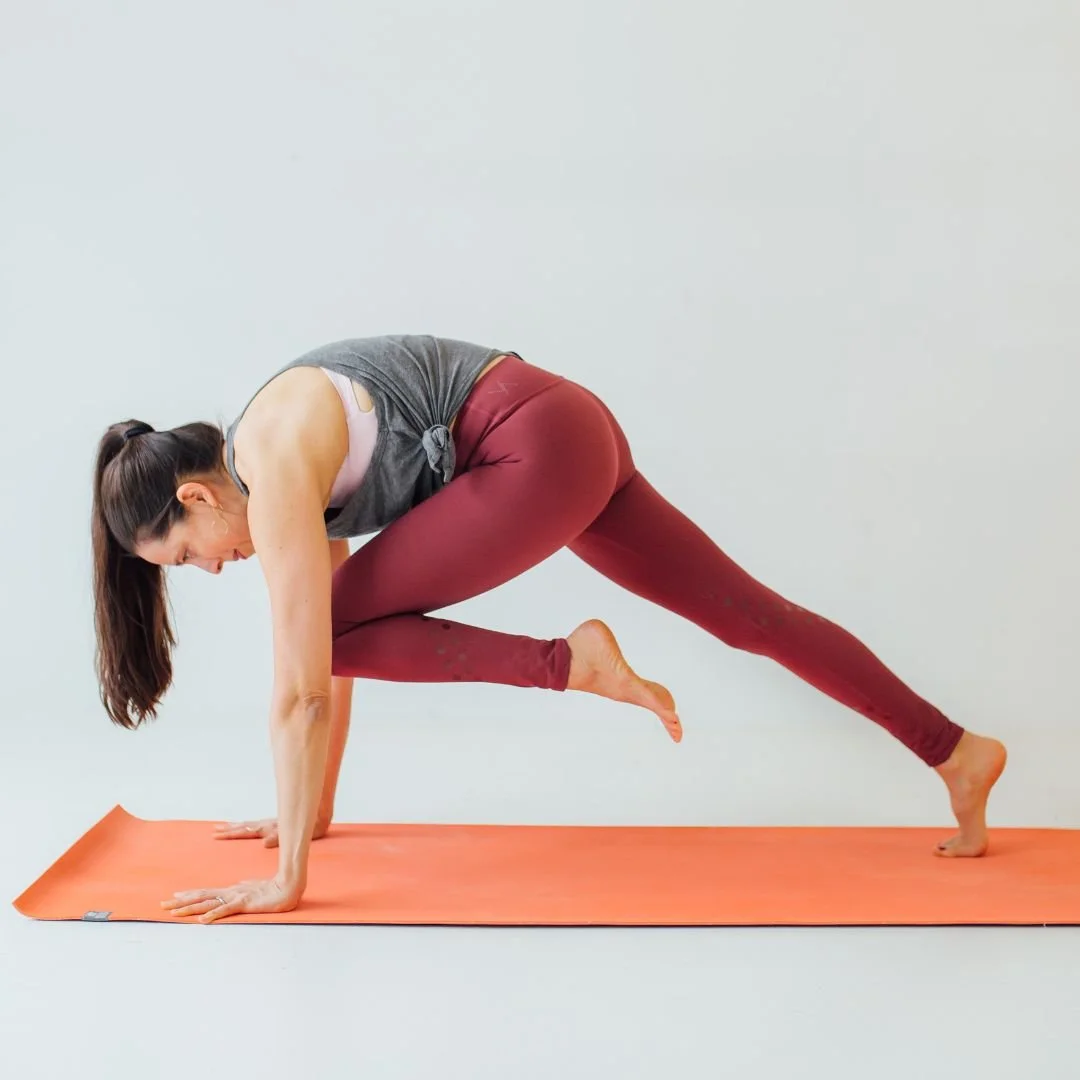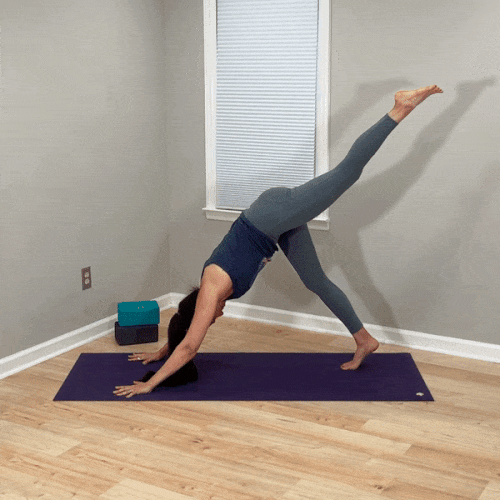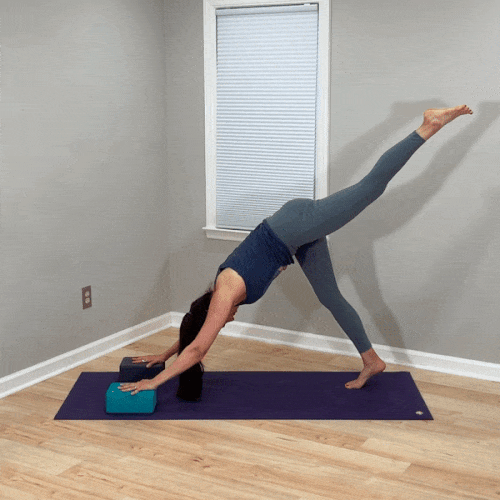How to Step Forward From Down Dog
This blog post was first sent to Jenni’s email list as an email newsletter. Sign up for the JRY email newsletter here!
The Low Down on the Down Dog Step Forward
Stepping forward from downward dog is one of the most common transitions in a typical vinyasa flow class – but it's also one of the most challenging!
Many yoga practitioners find themselves unable to step their foot all the way up between their hands at all.
And many others step their foot forward relatively easefully, but if you look closely, you'll see that they rush the transition, relying on momentum instead of muscular control to execute the movement.
It's not surprising that the down dog step forward is tricky for many of us, considering it requires
core strength
hip flexor strength in a shortened position (which is typically an area of weakness for our hip flexors!)
favorable body proportions (i.e., arms that are longer than lower legs)
proper technique
and more!
Today, I'd like to offer my favorite tips for helping you (and/or your yoga students!) improve your ability to step between your hands from down dog.
We can workshop this transition from many angles: technique, general modifications, targeted strength work, and more.
In this email, I'll break down my top 3 technique tips. (And in my video (embedded below!), I cover these 3 technique tips in more detail, plus modifications and targeted strength work!)
3 Technique Tips for the Down Dog Step Forward
1) Try allowing your knee to move out laterally (to the side) as you step forward.
It's tempting to curl our knee straight forward through center in this transition, but allowing our knee to track out toward the side often gives us more space in our hip joint!
I explain more about this point in my video (below), but the TL;DR version is that many people (especially those with retroverted hip joints!), have more range of motion in hip flexion + abduction than they do in pure hip flexion.
This translates into the ability to step one's foot farther forward from down dog when the knee tracks out laterally (a movement comprised of hip flexion + abduction).
2) Allow your wrist to lift.
Despite what we're sometimes taught in our yoga classes ;), there is no biomechanics-based "rule" that we must keep both wrists flat on the floor when stepping forward from down dog.
In fact, for many of us (especially those of us with shorter arms relative to our lower legs), keeping both wrists flat makes the transition simply impossible. 🤷♀️
Therefore, as a strategy for stepping forward, we shouldn't hesitate to shift more of our weight into one arm and allow the other wrist to lift up off the floor.
This can create the much-needed clearance many of us need for a smooth, controlled transition! 👍
3) Use yoga blocks under your hands:
Elevating our hands on blocks helps us in multiple ways!
It most obviously gives us additional clearance so that we can step our foot forward with more ease.
But in addition to that, the blocks also give us the space to slow down our step forward so that we can access more muscular work and rely less on momentum in the movement.
Lastly, the blocks serve as physical objects we can press our arms into. This pushing action helps our upper body musculature engage more and turns our arms into stable pillars of support for a more controlled step forward.
Watch my full tutorial on stepping forward from down dog for much more info and guidance!
In this video, I cover the technique tips I shared here in more detail and with more visuals, plus we discuss helpful modifications for this transition along with my top recommendations for strength exercise to support your down dog step forward in the longer term.
Check it out and let me know what you think!








